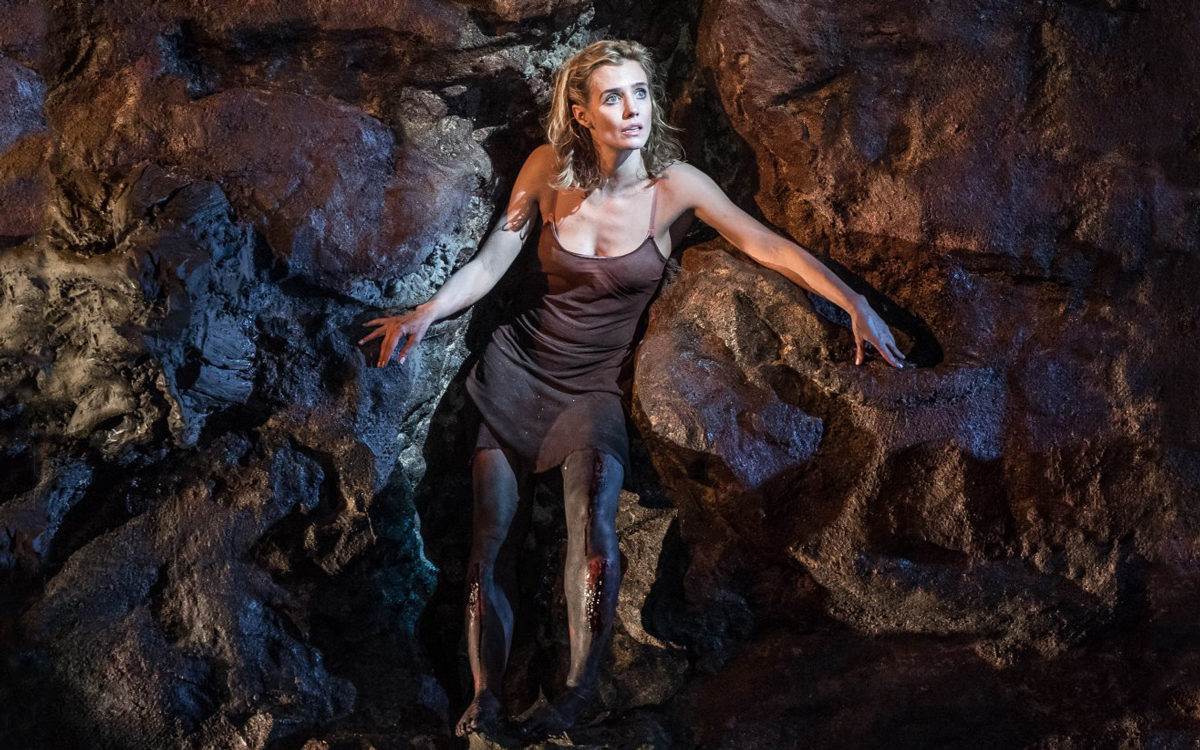Reserve your ticket to “A Body of Beckett,” part of the MIT Performing series
February 21, 2019 / 7pm
MIT Theater Building W97, 345 Vassar Street, Cambridge, MA
Actress-director Lisa Dwan shares her somatic take on the Irish bard as part of MIT Performing.
Endgame. Waiting for Godot. Picture one of Samuel Beckett’s existentialist masterpieces and chances are, you think of a man. Said man might be stuck in a trashcan or waiting for a God-like figure who never turns up. (It’s likely you will also imagine this man in a bowler hat).
Fortunately, one of the most acclaimed Beckettians on Earth has recast this narrow narrative.
Irish actress-director Lisa Dwan has been barnstorming from New York to Hong Kong with Beckett’s great monologues, making fifty-year-old texts seem heartbreakingly new. New York Times chief theater critic Ben Brantley called her “an instrument of Beckett, in that way saints and martyrs are said to be instruments of God.”
Blessedly for us, Dwan will presenting her lecture-demonstration, “A Body of Beckett,” as part of the inaugural MIT Performing series on February 21. Weaving together sections of selected Beckett texts with highly physical demonstrations and her own musings on Beckett’s thrust and motivation, Dwan creates a piece that’s part masterclass, part show—just the sort of hybrid presentation the MIT Performing series was built for.
Beckett is never far from Dwan’s mind, even as she shoots a new Netflix series. (The Irish poet didn’t author it, but that’s just a matter of timing. “Knife crime in the inner city,” she laughs. “Beckett would have got there eventually.”) Why does she feel particularly suited to his dour genius? “I’m Irish, and it helps,” she says. “The landscape he’s talking about I know; but more than that, the minute I came across modernism, I thought ‘That’s the language of my soul.’”
As to what exactly Dwan will present at MIT, she says cagily, “I’m questioning misapprehensions,” taking care not to give away too much about what she calls a “deeply personal lecture.” Her sense of mission, though, is clear: she’s enraged by the worshipful, patriarchal rigidity that has calcified around Beckett. “I have found that writers of his ilk are taken to the ivory chambers and made very difficult for people—and young women in particular—to engage with,” Dwan says, tartly. “When I was eighteen years old, I was shut out! It was always a lads’ club.”
Dwan feels she had to fight to reclaim him—to wrestle the great bard of Consciousness back onto a field that everyone shares. She’s very proud that when she performed No’s Knife, her own arrangement of the prose pieces Texts for Nothing at the Old Vic in London, “Seventy-five percent of my audience were women…and under thirty! To hear them sobbing at obscure language, I knew that my work is specifically to reach out to those people.”
While modern audiences often focus on male Beckettians like Bill Irwin and Barry McGovern, the great English actress Billie Whitelaw—a close collaborator and a foremost interpreter of Beckett for twenty-five years—became Dwan’s own mentor.
Despite this direct chain of transmission to the man himself, Dwan refrains from positioning herself as the Chosen Interpreter who worships at the Beckett altar. “I’m very suspect of laying on of hands, like some kind of Dalai Lama fecker,” she crows. “Billie demystified Beckett for me; she gave me his notes. She gave me the keys—and I would just like to pass those on to others.”
It was Whitelaw who helped Dwan unlock Beckett’s legendarily difficult play Not I, a monologue spoken “at the speed of thought” while only the actor’s mouth is visible in an extremely tight spotlight. Not I was Whitelaw’s chef d’oeuvre. Now Dwan has taken up its heavy burden, and the key turns out to be, of all things, dance.
Originally trained as a ballerina, Dwan’s background in movement and music allowed her to get deep into the muscle of Beckett’s work. The cliché is that he wrote about stillness: in one of his plays, a woman is trapped in a mound of dirt; other short works feature clowns stuck in bags. For Not I, the actor’s head is literally fixed in place. Yet as Dwan notes, language is part of the story. “This is heightened allegro! If you saw me from behind while I’m strapped into the head harness, you’d see that I was moving, just like a dancer would.”
“A Body of Beckett” will explore this landscape, attempting to explain the deep connections between somatic knowledge and Beckett’s metaphysics. Dwan uncovers the writer’s own connection to movement—for instance, his first draft of the play Footfalls looks very much like a piece of dance notation—and demonstrates her dance-conscious understanding of the body-as-instrument.
“I think his committee of voices and souls is haunting us more today than ever,” observes Dwan. Come to her lecture and you’re likely to see how, given the right and receptive body, Beckett’s ghosts can live again.


